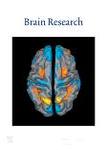版权所有:内蒙古大学图书馆 技术提供:维普资讯• 智图
内蒙古自治区呼和浩特市赛罕区大学西街235号 邮编: 010021

作者机构:Nanjing Med Univ Jinling Hosp Jinling Sch Clin Med Dept Neurosurg Nanjing Peoples R China Nanjing Univ Nanjing Jinling Hosp Affiliated Hosp Med SchDept Neurosurg Nanjing Peoples R China Nanjing Univ Chinese Med Jinling Clin Med Coll Nanjing Peoples R China
出 版 物:《BRAIN RESEARCH》 (Brain Res.)
年 卷 期:2025年第1855卷
页 面:149560-149560页
核心收录:
学科分类:1002[医学-临床医学] 1001[医学-基础医学(可授医学、理学学位)] 10[医学]
基 金:National Natural Science Foundation of China [BK20221557] 81771292
主 题:Galectin-3 NLRP3 inflammasome Traumatic brain injury Microglia Neuroinflammation
摘 要:Background: Externally caused traumatic brain injury (TBI) poses a woeful worldwide health concern, bringing about disability, death, and prolonged neurological impairment. Increased galectin-3 levels have been linked to unfavorable outcomes in several neurological conditions. This study explores the role of galectin-3 in TBI, specifically examining its contribution to neuroinflammation. Methods: BV2 microglia cells treated with lipopolysaccharide (LPS) and a mouse model of TBI were applied to investigate the impact of galectin-3 on neuroinflammation following TBI. Western blotting and immunofluorescence labeling were applied for evaluating protein levels and colocalization. Adeno-associated virus (AAV) that targets microglia was used to knock down galectin-3 in microglia. Nissl staining and the modified neurologic severity score were employed in evaluating neural survival and neurological function, and the cognitive impairment following TBI was assessed by the Y-Maze and Morri water maze test. Results: Galectin-3 expression was shown to rise dramatically after TBI, peaking between days five and seven. In vitro, BV2 cells treated with LPS showed reduced NOD-like receptor thermal protein domain associated protein 3 (NLRP3) inflammasome activation when galectin-3 was inhibited. In LPS-activated microglia, galectin-3 inhibition specifically decreased the expression of Toll-like receptor 4 (TLR4), nuclear factor-kappa B (NF-kappa B), p-NF-kappa B, NLRP3, Apoptosis-associated speck-like protein containing a CARD (ASC), caspase-1, and Gasdermin D (GSDMD). Injection with AAV containing siRNA to knock down galectin-3 in microglia was operated on mice in vivo. Following TBI, this knockdown led to reduced NLRP3 inflammasome activation, neuronal death, neurological impairments and cognitive impairment. Conclusions: Our foundings indicate that modulating microglia-derived galectin-3 following TBI to reduce neuroinflammation could serve as a promising therapeutic strategy.